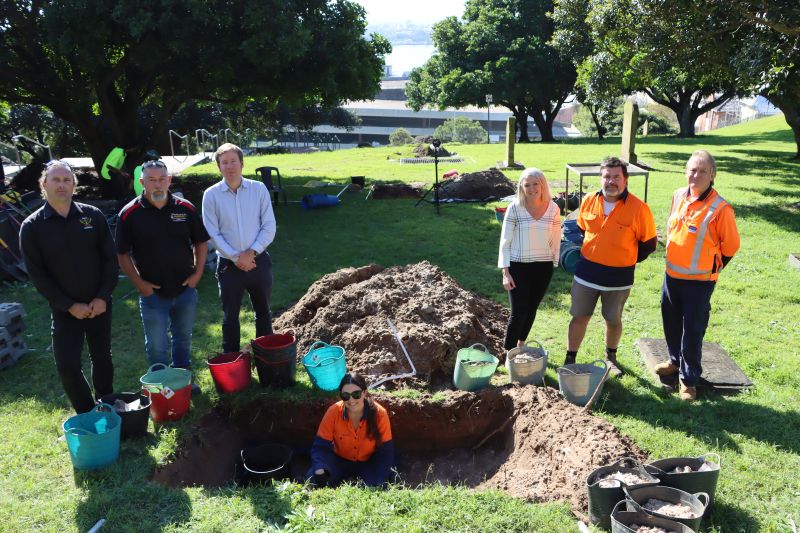An archaeological dig that kicked off at Newcastle’s oldest European cemetery this week will delve deeper into the heritage of the site ahead of its planned revitalisation.
Located high on the hill behind Christ Church Cathedral, Cathedral Park is the resting place of more than 3300 of the city’s earliest European inhabitants, and prior to settlement was the site of an Aboriginal camping ground for thousands of years.

City of Newcastle Manager Regulatory, Planning & Assessment Michelle Bisson said the archaeological dig was an essential part of the process to ensure the history of the site was protected and preserved.
“City of Newcastle has engaged the Archaeological Management and Consulting Group (AMAC) to undertake a series of excavations to test for the presence of historical archaeological relics or Aboriginal archaeological objects in areas subject to planned landscaping and heritage interpretation works,” Ms Bisson said.
“This test excavation program will be supervised by Registered Aboriginal Parties (RAPs) from the local community.
“Appropriate safety measures will be put in place by City of Newcastle to ensure the park will remain open to the public for the duration of these archaeological works, which are required before we can progress with the next stage of the proposed landscaping project.
“The archaeologists on site are also happy to engage with the public and answer any questions they may have.”
Cathedral Park was used as a burial ground by the penal settlement from 1816 until 1884 and is the final resting place of notable early settlers including Newcastle’s first Mayor, James Hannell, former Mayor James Kemp, and magistrates John Bingle and Major Archibald Clunes Innes. The 1826 grave of Mary Martin is thought to be the oldest remaining headstone on the site. Several Aboriginal infants and adults are buried at the cemetery and entered on the burial registers, including the 1860 burial of an Aboriginal man named Jacky Jacky.
After falling into disrepair, the site was acquired from the Church by City of Newcastle in 1966 for the establishment of a public park.
Since 2012, City of Newcastle has been carrying out a number of improvement projects as part of a masterplan proposal to transform Cathedral Park into a showpiece destination. The plan is designed to respect the site’s heritage while also making the most of its spectacular views over the city and harbour and its position adjacent to the Christ Church Cathedral, which attracts upwards of 80,000 visitors each year.
The proposed future landscape and heritage interpretation works will help stabilise the surviving headstone monuments in line with their state heritage significance and recreate the original cemetery layout where possible, while also creating a beautiful, contemporary and engaging public space that integrates parkland and heritage interpretation uses.
Other plans include the erection of an infant memorial as well as a monument remembering the 60 people who died in the Cawarra shipwreck of 1866, 31 of whom were buried on this site. A rotunda is proposed for the site of ‘Mulimbah’ to acknowledge the former Colonial Georgian style family home and garden built by Simon Kemp in the 1840s and to tell the story of early Novocastrians and their way of life.
To find out more visit the Cathedral Park page on our website.
